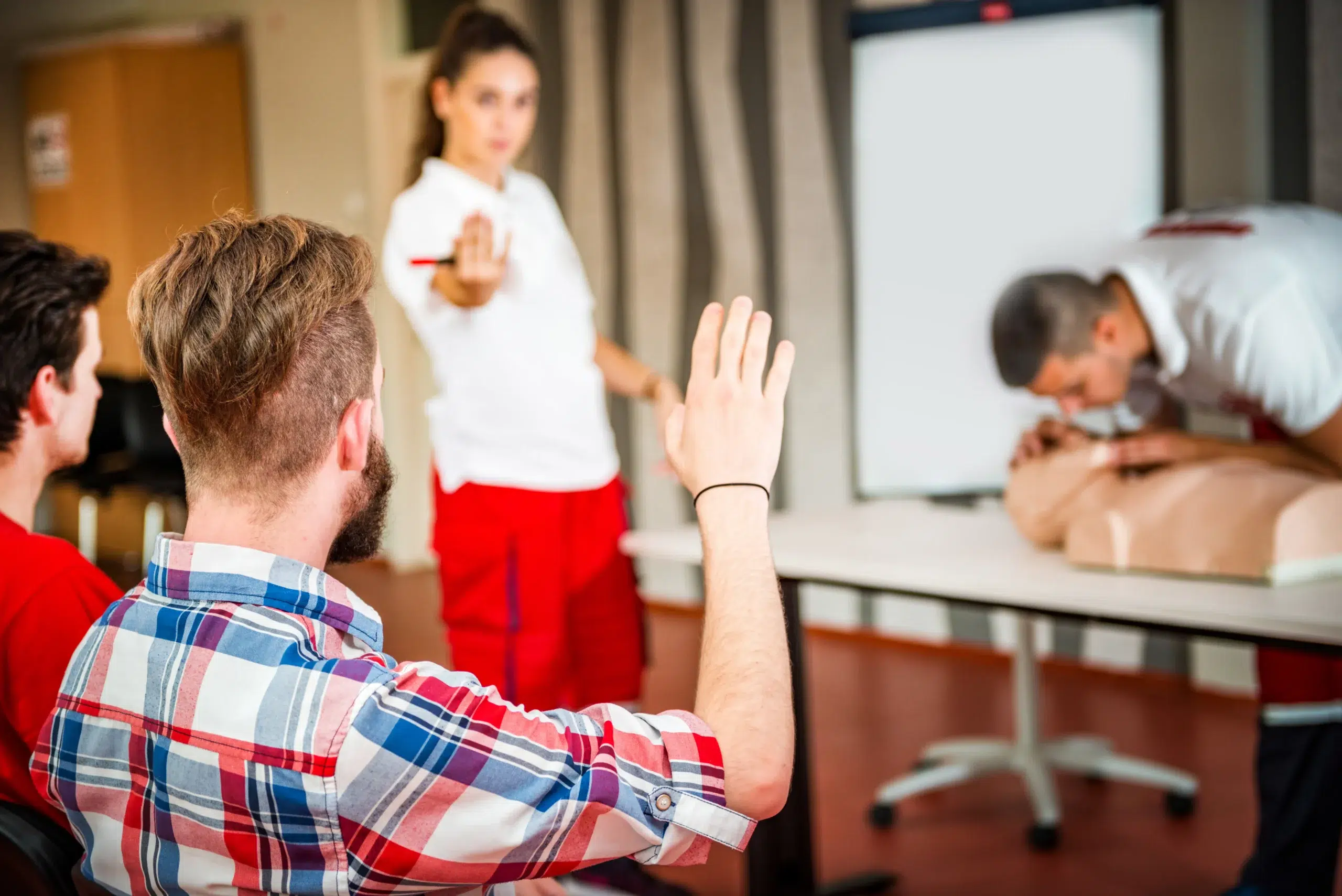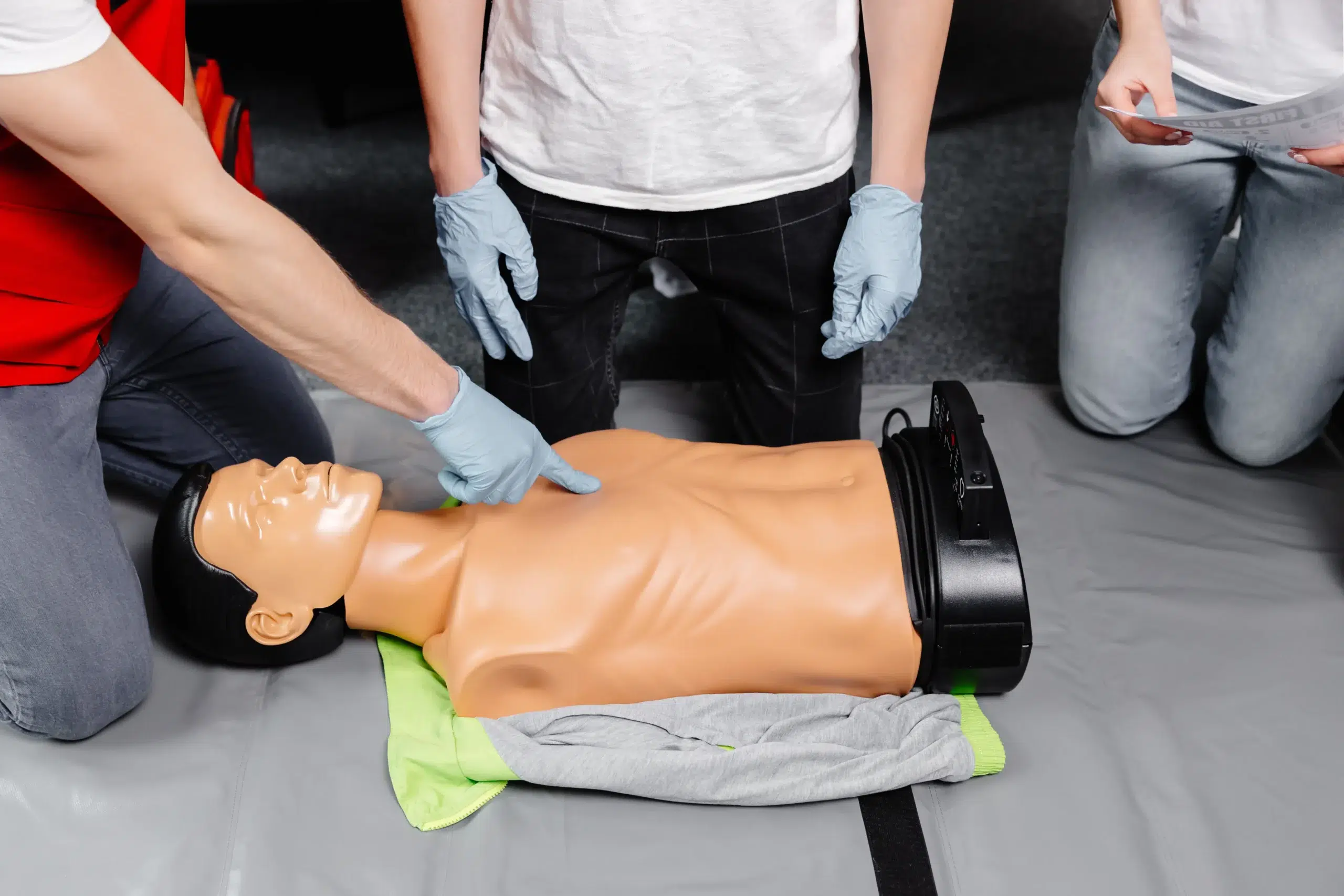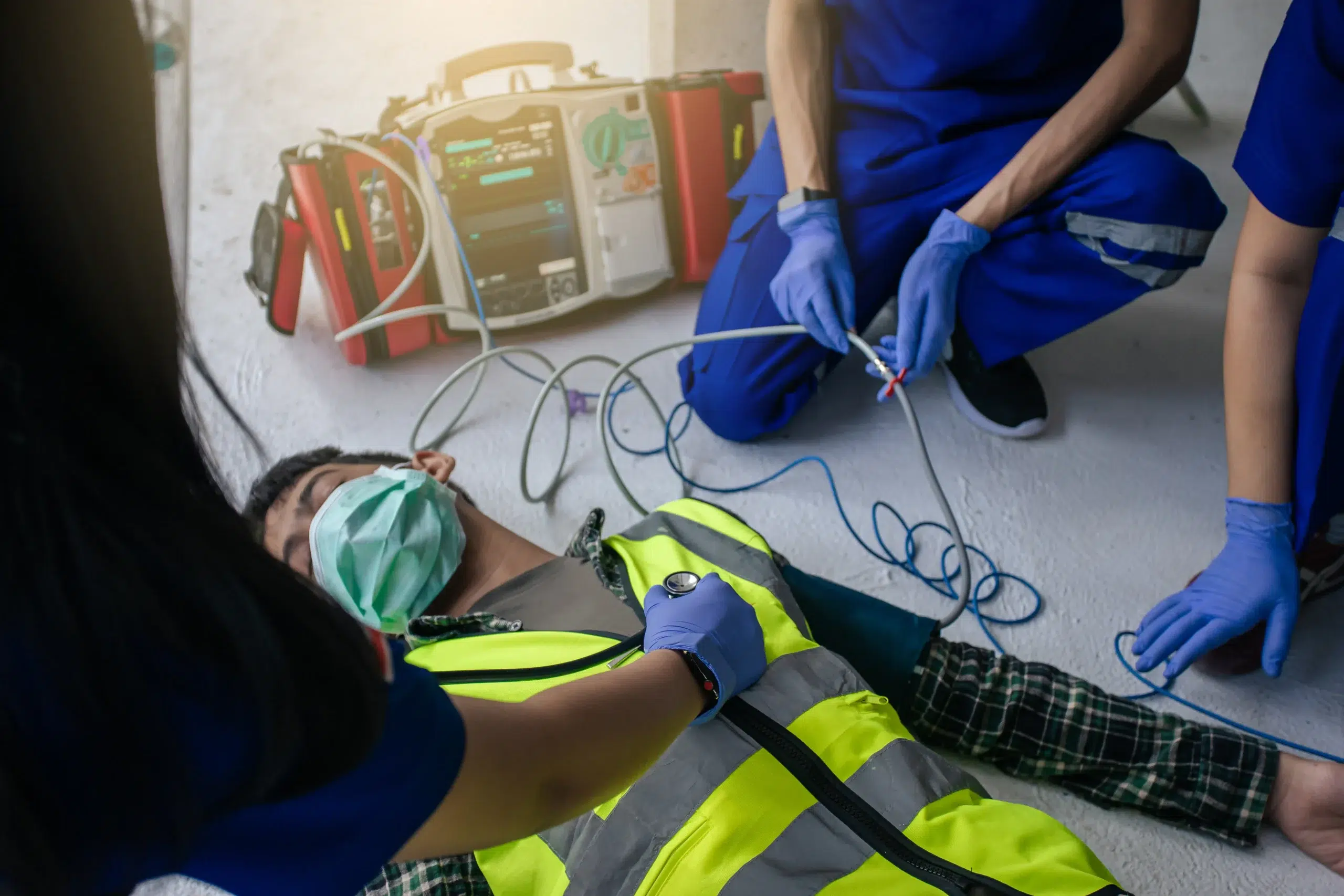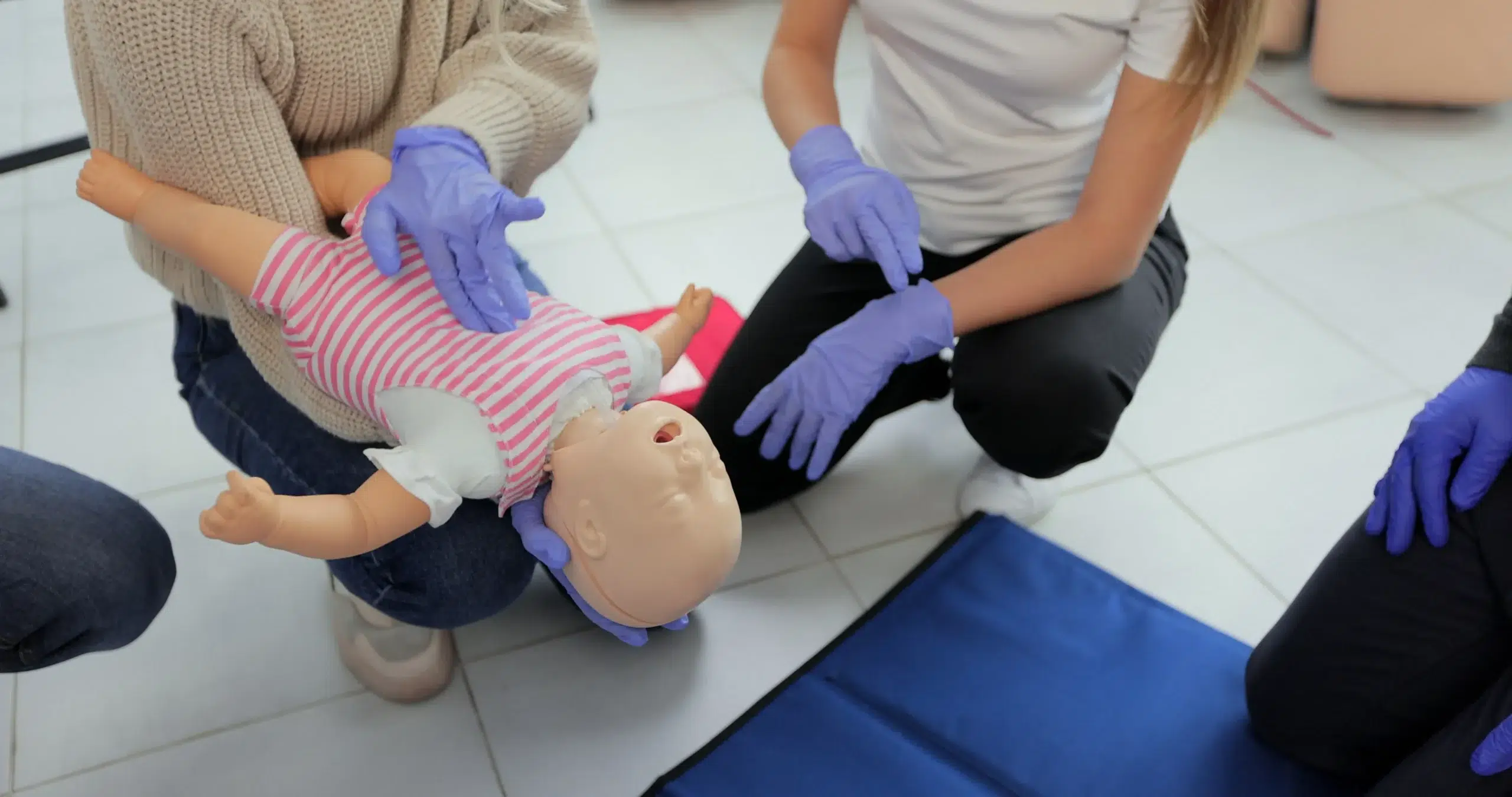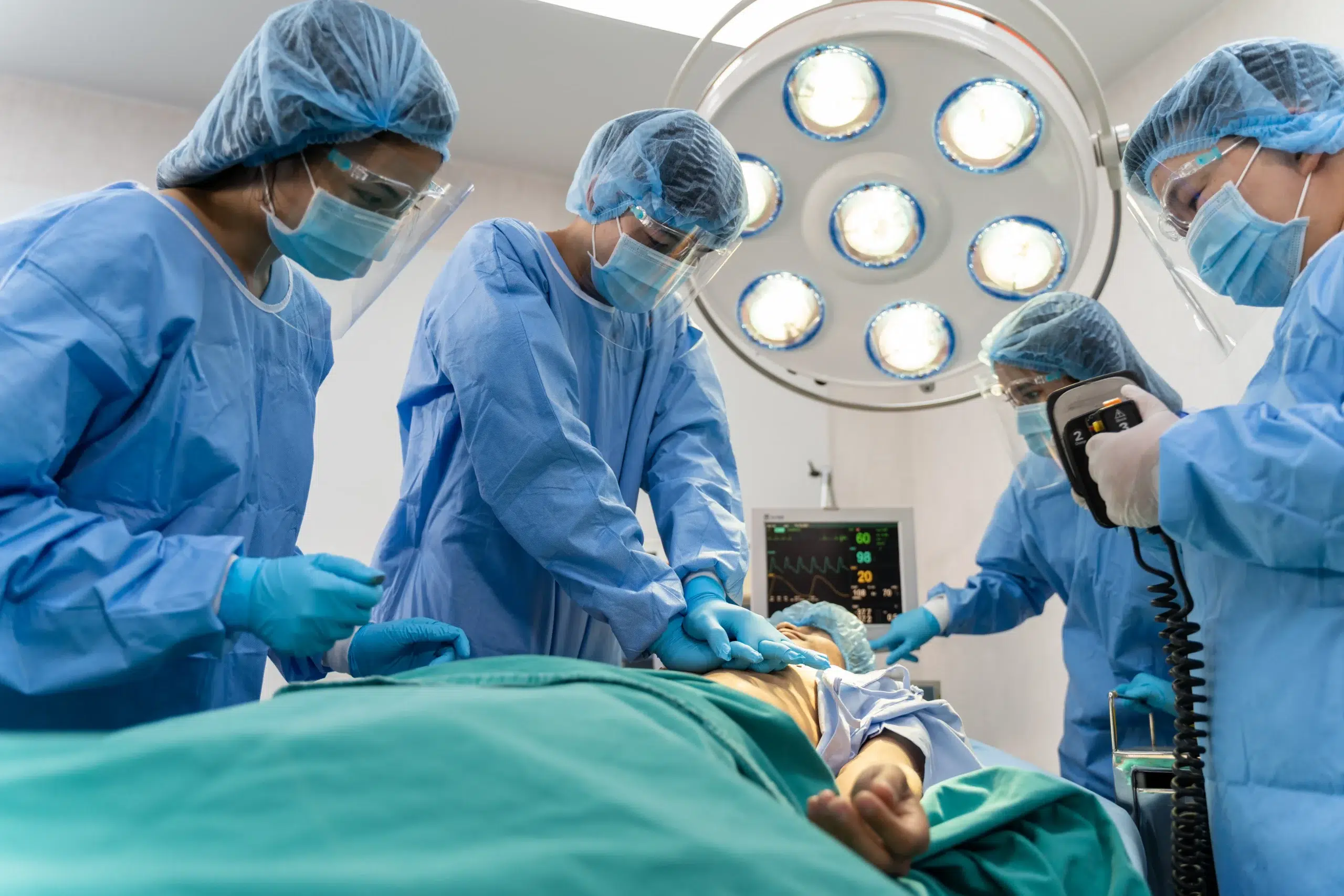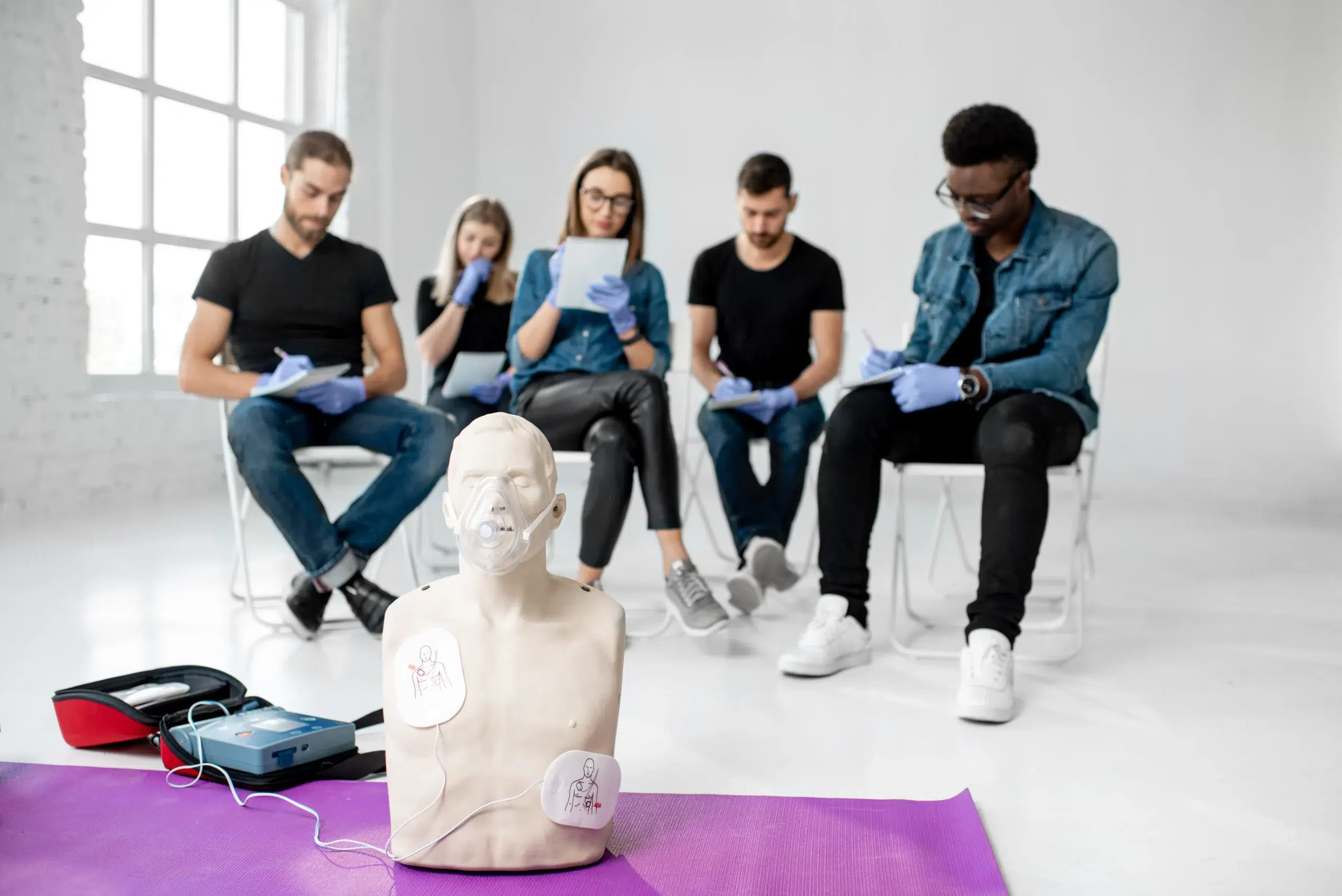Emergencies happen, and knowing how to respond can save lives. BLS certification empowers you to act quickly and decisively in critical situations. It’s a vital credential for healthcare professionals and a valuable asset for anyone who wants to be prepared. This guide explores the ins and outs of BLS certification in San Jose, covering everything from essential skills and debunking common myths to finding the right course and staying up-to-date with the latest guidelines. Whether you’re a seasoned medical professional or just starting, this guide will help you find the perfect BLS certification program in San Jose.
Key Takeaways
- BLS certification empowers anyone to respond to emergencies: It provides essential life-saving skills beyond basic CPR, including using an AED and managing airways, valuable for both healthcare professionals and the general public.
- Flexible learning options make BLS certification accessible: Choose from in-person, blended, or online courses to fit your schedule and preferred learning style. Consider factors like cost, content, and instructor experience when selecting a provider.
- Staying current with BLS guidelines ensures preparedness: Regular renewal and continuing education are crucial for maintaining competence and providing effective care. This ongoing learning reinforces essential skills and introduces new techniques for better patient outcomes.
What is BLS Certification?
BLS certification—Basic Life Support—is a vital credential for anyone in the medical field. It gives healthcare providers and first responders the skills to handle life-threatening emergencies. Think of it as the foundation for any medical professional, ensuring they can provide crucial care during critical moments. It’s not just about knowing what to do, but how to do it effectively under pressure. This training empowers individuals to confidently respond to emergencies, potentially saving lives.
What BLS Certification Is and Why It Matters
BLS certification equips you with the knowledge and practical skills to respond to cardiac arrests and other emergencies. It emphasizes early recognition and intervention, including CPR, using an AED, and relieving airway obstructions. High-quality CPR is a cornerstone of BLS, focusing on chest compressions and rescue breaths. The training also covers how to recognize the signs of a heart attack, stroke, and other life-threatening conditions. Why does this matter? Because early intervention can dramatically improve patient outcomes. BLS-certified professionals are prepared to act quickly and decisively, increasing the chances of survival and minimizing long-term complications. For more information on the importance of BLS Certification, check out this article on Debunking Common Myths About BLS Certification.
Essential BLS Skills
BLS training covers a range of life-saving skills, going beyond just CPR. You’ll learn how to use an AED (automated external defibrillator), a portable device that can restore a normal heart rhythm. Airway management is another key component, teaching you how to clear an obstructed airway in a choking victim. BLS also emphasizes teamwork and communication, preparing you to work effectively with other medical professionals during emergencies. The training covers different age groups, from infants to adults, ensuring you can provide appropriate care for anyone.
Debunking BLS Myths
One common misconception is that BLS certification is only for doctors and nurses. In reality, it’s valuable for a wide range of professionals, including medical assistants, EMTs, paramedics, dentists, and even those outside the medical field like teachers, coaches, and lifeguards. Another myth is that BLS training focuses solely on cardiac arrest. While cardiac arrest is a significant part of the training, BLS covers a broader scope of emergencies, including choking, respiratory distress, and stroke. Understanding these situations and knowing how to respond can make a real difference in someone’s life. For those interested in learning more about BLS for Healthcare providers, this article on common misconceptions is a helpful resource.
Where to Get BLS Certified in San Jose
Finding the right BLS certification course is crucial for both your career and your confidence in emergency situations. Here are some places in San Jose where you can get certified:
Safety Training Seminars
Safety Training Seminars offers American Heart Association-certified BLS courses right here in San Jose. They focus on providing flexible scheduling options, including weekend and evening classes, to accommodate busy professionals and students. Check their website for the latest course schedules.
American Red Cross
The American Red Cross is a well-known provider of BLS certification. Their San Jose location offers various course formats, including in-person and blended learning (a combination of online and in-person training). This allows you to choose the learning style that best suits your needs. Explore their BLS course options online.
CPR Training Center
The CPR Training Center in San Jose offers BLS certification along with other courses like ACLS, PALS, and First Aid. They emphasize hands-on training and small class sizes for a more personalized learning experience. Visit their website for more information.
Stanford Health Care
Stanford Health Care provides BLS training, primarily for their healthcare professionals. While their courses are high-quality, they may not be readily accessible to the general public. Check their website or contact them for course availability.
American Heart Association
While the American Heart Association doesn’t directly offer courses, they set the standards for BLS certification. You can find AHA-certified courses through various training centers, including those listed above. Learn more about AHA BLS certification on their website.
Course Formats and Costs
Finding the right BLS course often depends on your learning style and schedule. Luckily, there are several options available, from traditional in-person classes to blended learning and fully online experiences. Understanding the various formats and their associated costs will help you make an informed decision.
In-Person BLS Classes
In-person BLS classes offer a hands-on learning experience, perfect for those who thrive in interactive environments. These courses provide direct interaction with certified instructors who guide you through essential skills like CPR, using an AED, and providing rescue breaths. The in-person format allows for immediate feedback and personalized instruction, ensuring you master the techniques. The American Red Cross offers these courses in San Jose. These in-person classes can be as short as 4.5 hours.
Blended Learning BLS
For those seeking a balance between online convenience and in-person practice, blended learning BLS programs are a great option. You’ll complete the theoretical portion of the course online at your own pace, then attend a shorter in-person session to practice and demonstrate your skills. This format offers flexibility while still providing the crucial hands-on component. The Red Cross offers this blended learning approach.
Online BLS Courses
Fully online BLS courses cater to busy schedules, allowing you to complete the entire certification process from home. These courses typically involve interactive modules, videos, and online assessments. While convenient, it’s important to note that fully online courses may not meet all workplace requirements. ACLS.com offers online BLS certification, which is particularly convenient for nurses. Always confirm with your employer whether a fully online course is acceptable.
Typical Costs & Discounts
BLS certification costs vary depending on the provider, course format, and location. In San Jose, you can expect to pay between $70 and $150 for a comprehensive BLS certification course. Keep an eye out for discounts—some providers offer reduced rates for students, groups, or returning customers. It’s always wise to compare pricing and course content before committing. This guide to BLS training in San Jose offers helpful information on typical costs.
Safety Training Seminars’ Low Price Guarantee
Safety Training Seminars provides affordable, high-quality American Heart Association BLS training in downtown San Jose. We offer a low price guarantee, ensuring you receive excellent value. Our courses are led by experienced instructors and cover all the essential skills you need to respond to emergencies confidently. Contact us to learn more about our competitive pricing and convenient course schedules. We also have a low price guarantee.
Getting BLS Certified: The Process
Getting your BLS certification is straightforward. This section breaks down the process so you know what to expect.
Steps to Certification
First, find a reputable training center like Safety Training Seminars that offers American Heart Association BLS courses. They offer various course schedules and formats to fit your needs. Once you’ve chosen a provider and course date, you’ll typically register and pay for the course online. Some providers may require you to complete some online coursework before attending the in-person skills session.
What Happens During Training
BLS training blends online learning with hands-on practice. You’ll work with certified instructors who guide you through essential life-saving techniques, including high-quality CPR for adults, children, and infants, how to use an AED, and other critical skills. The in-person portion emphasizes practical application, giving you a chance to perform these skills in a simulated environment.
Exams and Skills Tests
To earn your BLS certification, you’ll need to pass a written exam and a practical skills test. The written exam assesses your knowledge of BLS principles and procedures. The skills test requires you to demonstrate your proficiency in performing CPR and other life-saving techniques in a live setting. Your instructors will prepare you for both assessments.
Tips for Passing
Earning your BLS certification is very achievable. Review the course materials diligently, both online and during the in-person session. Actively participate in the hands-on practice sessions and ask your instructor any questions. The goal is to build your confidence and skills so you can respond effectively in real-life emergencies. Many providers, including Safety Training Seminars, offer convenient online BLS certification that’s just as credible as in-person training. This flexible option allows you to learn at your own pace and complete the coursework when it’s convenient for you.
Who Needs BLS & Why?
Knowing CPR can make anyone a valuable asset in a crisis. But BLS certification goes beyond the basics of CPR, equipping people with a broader set of life-saving skills. Let’s explore who benefits from this training.
Who Should Get Certified?
BLS certification is essential for healthcare professionals like doctors, nurses, paramedics, EMTs, physician assistants, dentists, medical assistants, respiratory therapists—anyone providing direct patient care. It’s often a prerequisite for employment and licensure. But BLS certification isn’t just for medical professionals. It’s valuable for people in education, childcare, and other public-facing roles. For a helpful overview, take a look at this resource on BLS Certification.
Benefits for Healthcare Professionals
For healthcare providers, BLS training provides the foundation for handling emergencies like cardiac arrest, respiratory distress, and choking. It prepares you for high-pressure scenarios, enabling you to confidently administer CPR, use an AED, and manage airways. This BLS training overview highlights how these skills translate to better patient outcomes and safer work environments. This article further explores how BLS training empowers healthcare professionals.
Why Non-Medical Workers Benefit
While often associated with healthcare, BLS certification benefits anyone, regardless of profession. Think teachers, coaches, lifeguards, personal trainers, security guards, flight attendants, even parents or grandparents. This article on BLS certification for non-medical professionals explains why it’s so valuable. Knowing how to respond effectively in a crisis can make all the difference, providing immediate support until professional help arrives.
Career Advancement with BLS
A BLS certification can open doors to new career opportunities or enhance your current role. It demonstrates a commitment to safety and preparedness—valuable assets in any workplace. This piece on career opportunities with BLS certification explains how it can be an essential qualification for many fields, and thankfully, it doesn’t require a huge time commitment. It’s a worthwhile investment in your professional development, signaling your dedication to a safe and supportive environment. Plus, knowing you have the skills to potentially save a life brings confidence and empowerment.
Keeping Your BLS Certification Current
Keeping your BLS certification current isn’t just a box to check—it’s about ensuring you’re always ready to provide effective, life-saving care. Medicine is a constantly evolving field, and staying updated is crucial for any healthcare provider.
Renewal Requirements
BLS certifications are typically valid for two years. This means you’ll need to recertify regularly to maintain your credentials and demonstrate your continued competence. Knowing the renewal process and scheduling your recertification course in advance ensures you won’t experience a lapse in your qualification. Check with your certifying organization, such as the American Heart Association, for specific renewal guidelines.
Continuing Education
Even between renewals, continuing education is essential. Look for opportunities to refresh your skills and knowledge through workshops, online resources, and discussions with colleagues. This ongoing learning helps reinforce your existing skills and introduces you to new techniques and best practices. Staying informed about the latest advancements in emergency cardiac care can significantly impact patient outcomes. Resources like Criticare Medical emphasize the importance of BLS training for nurses in handling high-pressure scenarios effectively.
Staying Up-to-Date with BLS
BLS encompasses a wide range of emergency situations, from cardiac arrest and respiratory distress to choking and allergic reactions. Staying current with BLS guidelines means you’re prepared to handle these diverse scenarios effectively. Regular training and refreshers help ensure everyone on your team is on the same page, leading to better coordination and patient care. Staying proficient in BLS isn’t just about maintaining your certification—it’s about being confident and prepared to make a real difference when it matters most. You can find more information on BLS for healthcare providers at My CPR Certification Online.
Choosing a BLS Provider
Finding the right BLS provider is crucial for a positive and effective learning experience. Several factors can influence your decision, so take the time to research and compare options before committing to a course.
Factors to Consider
When selecting a BLS provider, prioritize the quality of the training. A comprehensive program should cover essential CPR techniques for adults, children, and infants, and align with the latest American Heart Association guidelines. In a diverse city like San Jose, having well-trained BLS providers is invaluable. Consider becoming BLS certified and a vital link in the chain of survival. Also, think about the course format (in-person, blended, or online), schedule flexibility, and convenient locations.
Comparing Courses
It’s smart to compare what different BLS certification courses offer. Look at the course content, the total duration of the training, and any additional resources or materials included. Prices vary depending on the training center and location. In San Jose, expect to pay between $70 and $150 for a comprehensive BLS certification course. Reading reviews from past students can offer valuable insights into the quality and effectiveness of different programs.
Instructor Qualifications
The expertise and experience of your instructors play a significant role in how well you learn BLS skills. Look for certified instructors with a strong background in healthcare and a passion for teaching. Safety Training Seminars, for example, is a woman-owned AHA Training Center committed to providing high-quality instruction. Knowing your instructors are qualified and experienced will give you confidence in the training you receive.
Support and Resources
A good BLS training provider offers more than just the course itself. Consider the level of support provided before, during, and after the training. Do they have readily available customer service? Do they offer refresher courses or continuing education opportunities? Safety Training Seminars, for instance, is known for its excellent customer service. These resources can make your learning journey smoother and help you maintain your skills.
Why Choose Safety Training Seminars?
Safety Training Seminars offers a range of American Heart Association courses in downtown San Jose, making it a convenient option for locals. They provide various course formats—including in-person, blended learning, and online options—to fit your schedule and learning style. With their low price guarantee, you can be confident you’re getting quality training at a competitive price. Plus, their dedicated customer support team ensures you have the assistance you need throughout the certification process.
Related Articles
- BLS Classes in Santa Clara: The Complete Guide – San Jose CPR Classes
- BLS Courses in San Jose: Your Complete Guide – San Jose CPR Classes
- ACLS Certification in San Jose: Your Comprehensive Guide – San Jose CPR Classes
- BLS Certification in San Jose: A Guide for Healthcare Providers – San Jose CPR Classes
- BLS Renewal in San Jose: Your Guide – San Jose CPR Classes
Frequently Asked Questions
Is BLS certification only for medical professionals? Not at all! While essential for healthcare providers, BLS certification benefits anyone who might need to respond to a medical emergency. Teachers, coaches, lifeguards, childcare providers, and even parents can gain valuable skills and confidence from BLS training. It empowers individuals to act quickly and effectively in critical situations, providing immediate support until professional help arrives.
What’s the difference between online and in-person BLS courses? Both online and in-person BLS courses cover the same core material and lead to a valid certification. Online courses offer flexibility, allowing you to learn at your own pace from anywhere. In-person classes provide hands-on practice and direct interaction with instructors, which some people find beneficial for mastering the techniques. Consider your learning style and schedule when choosing the format that suits you best. Just be sure to confirm with your employer if they have specific requirements.
How much does BLS certification cost, and how long is it valid? BLS certification costs typically range from $70 to $150 in San Jose, depending on the provider and course format. Certifications are usually valid for two years. Look for providers like Safety Training Seminars that offer a low price guarantee, ensuring you receive quality training at a competitive rate. Remember to factor in the cost of recertification when budgeting for your training.
What does BLS training cover? BLS training goes beyond basic CPR. It covers a range of life-saving skills, including high-quality CPR for adults, children, and infants, using an automated external defibrillator (AED), relieving airway obstructions, recognizing the signs of various medical emergencies, and working effectively as part of a team. The goal is to equip you with the knowledge and skills to confidently respond to a variety of emergency situations.
How can I find a reputable BLS training provider in San Jose? Look for providers offering American Heart Association-certified courses. Consider factors like instructor qualifications, course format options, schedule flexibility, location convenience, and the availability of support resources. Reading reviews from previous students can also give you valuable insights. Safety Training Seminars, for example, offers a range of AHA courses in downtown San Jose with various scheduling options and a low price guarantee.
